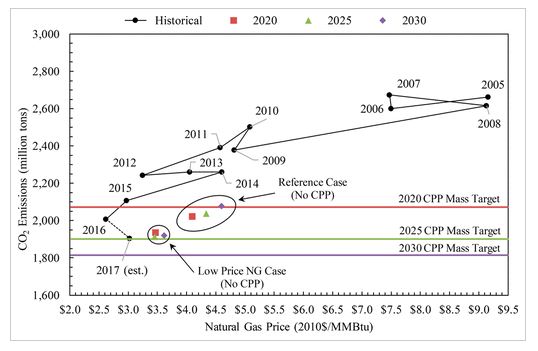The Powering Past Coal Alliance(1) wants to phase out coal power but are hampered by limited membership who don't have to face economic realities. Finland has different energy sources available than China has. And China is not going to be bullied by Finland, Denmark, or anyone else.
In 2014, for example, the US was pleased that China agreed to talk about CO2 - in 2030. Until then, the world's largest polluter declared they were going to do whatever they wanted but America cheered it as a victory because China had never even agreed on a future date to talk prior to that. Yet we were being hypocritical. In actual developing nations, Dr. Mikko Paunio notes, the U.S. has declined to help the World Bank fund any energy programs unless they are solar or wind, even if it's replacing wood and dung fires in homes with much cleaner centralized energy. In poor countries only coal is still cost-effective.
In the U.S., not a member of the PPCA, we've driven beyond their goal anyway. Using natural gas, in 2017 the private sector drove energy emissions below what the never-enacted Clean Power Plan would have required by 2025, there are now more employees in solar companies than there are coal mines. America has done its part. Though mining is a rallying cry for unions, it is Democrats, who are usually pro-union, that led the charge in replacing coal with natural gas.

Historical and projected CO2 emissions from the U.S. power sector in relation to natural gas prices (as delivered to electric generators). Projected emissions and gas prices are national averages based on scenarios in the AEO 2017 for the reference case and the high oil and gas resource and technology case.
It's the members of PPCA themselves who aren't doing enough, according to a new analysis. Members only pledge to close older plants nearing retirement anyway (2) and that means they will only contribute to a reduction of 1.6 giga-tons of CO2 by 2050, 2% of the emissions from coal that will occur during that time or around 3 years of what member UK residents alone will account for. (3)
The reduction due to PPCA is so modest because it's dominated by either wealthier countries who can phase out emissions from coal energy now that everyone owns air conditioners, or that don't use coal anyway. China can claim to be the largest solar user in the world because they are a dictatorship and can throw around any number they want.(4) What is clear is that they are by far the largest coal user, and those plants are young so they are not going anywhere.
Knowing that, and perhaps not wanting to incur the wrath of China, the new analysis instead criticizes Australia - a democracy. It is likewise easy to criticize Spain, Japan, and Germany, though they all claim to be doing their part in different ways; Germany by putting in solar and wind and keeping quiet how much energy they buy from Russia on the spot market and Japan by relying on nuclear for 30 percent of their power.
There is a clear solution, and it does not involve mitigation and rationing and wealthy countries telling poorer ones they can never own air conditioners. It is more natural gas and nuclear. Environmentalists are staunchly opposed to both of those but obstructionism is going to happen in that market segment anyway. Activists lobbied for natural gas until it became viable and were all for ethanol as well, over the objections of scientists who said it wouldn't help emissions. Ignore the loud critics, embrace science, and our emissions problem will be solved while the whole world continues to lead better lives.
NOTES:
(1)
Canada
United Kingdom
Austria
Angola
Belgium
Costa Rica
Denmark
El Salvador
Ethiopia
Fiji
Finland
France
Ireland
Israel
Italy
Latvia
Liechtenstein
Lithuania
Luxembourg
Marshall Islands
Mexico
Netherlands
New Zealand
Niue
Portugal
Senegal
Sweden
Switzerland
Tuvalu
Vanuatu
(2) France and Germany, benefiting from a lot of nuclear compared to the US in the early 1990s, pulled the same Public relations stunt by choosing the target date for emissions. In the case of Germany, the target date allowed them to include East German figures, so all they had to do was close post-World War II Soviet plants and they were nearly there. France had a new plant come online which ate into their CO2.
(3) Assuming they hit their target of 3 tons per person per year.
(4) They lied about their CO2 emissions until imaging was advanced enough to truly detect it.




Comments